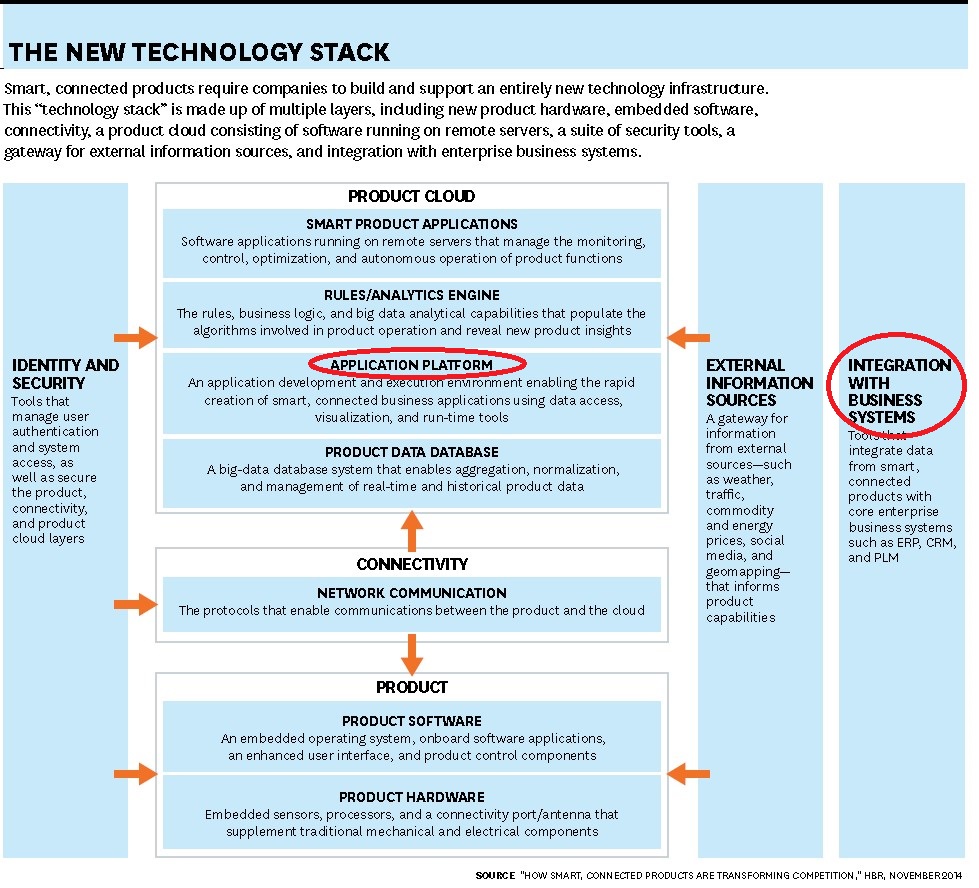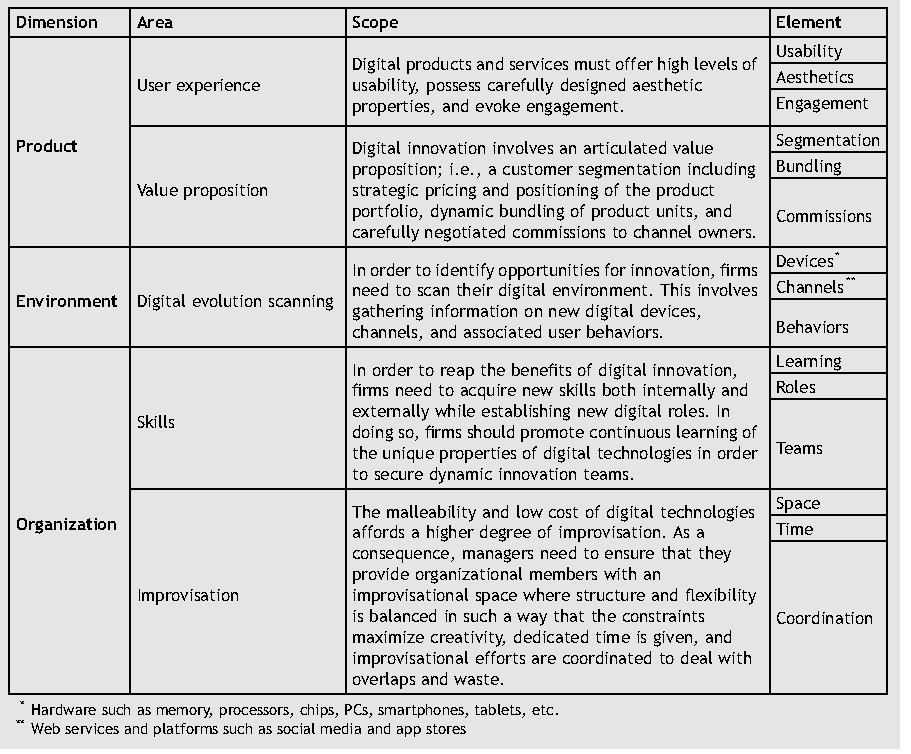Massive increase in using low-code platforms

According to Gartner by 2024, low-code platforms will be responsible for over 65% of the application development activity and three-quarter of large companies will be using at leastfour low-code tools (Vincent, P., Lijima, K., Driver, M., Wong, J. & Natis, Y., 2019).
Apparently, there are significant reasons for companies to include low-code applications within their information systems strategy. Previous blogs showed some triggers: flexibility, speed, need for prototyping and rapid application development approach combined with behaviour driven development. What is the background of this development and how are low/no-code systems supporting competitive advantage?
Competitive advantage

Competitive advantage can be described as being ‘ahead of competition by profit’. Porter & Heppelmann (2015) emphasize on the ability to unlock the value ofdata as an important competitive advantage
According to Laudon & Laudon (2015) competitive advantage is achieved, reaching one or more of the following strategic goals:
- Operational Excellence
- New Products, services and Business models
- Customer & Supplier intimacy
- Improved Decision making
Profitability and strategy are determinants from the industry’s characteristics, shaped by Porter’s five competitive forces (Porter, 2008). Early adoption of new technology supports maintaining the competitive advantage. Information technology serves Porter’s theory of competitive forces and it supports stabilizing the business model (Porter, 2008). Vice versa, technology has already changed industries (Mohapatra, 2012). The fast-moving digital disruption will impact the company as a whole, forcing to rethink all four above mentioned strategies. Combining this with an analysis of the industry (based on Porter’s five forces model) will lead to new strategies, products and business models.
Low-code platforms and competitive advantage
Further to the layered approach on transforming silo’s by Tett (2015) and Gulati (2007) (see previous blog ‘Silo busting and the added value of information systems’), McKinsey presents a two-layer approach for managing “duality of digital”; innovating new digital businesses while digitizing the legacy systems (McKinsey, 2019). It is likely that more than one low/no-code platform is needed for specific goals. A valuable tool to find the context of low/no-code platforms within the overall IS/IT approach is ‘The New Technology Stack’ as defined by Porter & Heppelmann (2015) see figure 1.

Low/no-code platforms will typically occur in the red circled areas. Optimizing value creation with low/no-code platforms is realized when integrating the implementation and use with the overall IS strategy of the other segments within the ‘Technology Stack’ (Porter & Heppelmann, 2015).
Using a framework
Using new technologies like low/no-code platforms is crucial to survive competition in current and future markets, in combination with building new business models. But it is even as crucial to align ‘organisational orchestration’ with the information systems strategy. As we have seen in the Gartner Magic Quadrant (see blog ‘Digital transformation with a no-code platform’), there are different low/no-code platforms available for different use. Important to match company’s goals with the most suitable platform, distinguishing between applying low/no-code within the IT processes and at your citizen developers. A framework can be helpful for the digital transition. Although any framework has its limitations the ‘Digital Innovation framework’ from Nylén & Holmström (2015) is recommended (see fig. 2).

This framework creates a holistic view with three main dimensions where uncertainty will occur when guiding the digital innovation process. It includes a change management component (skills and improvisations), customer focus (user experience), business model innovation (value proposition) and IS innovation (environment). This framework aligns with the author’s view and includes the necessary organisational change as presented by Tett (2015) and Gulati (2007) (see blog ‘Silo busting and the added value of Information Systems’). Combining information system technology with organisational change processes, secures that these dimensions are integrated when applying new technologies.
Integrated approach
Multiple low/no-code platforms are available for various goals. Using a holistic approach combing the technology with the digital innovation strategy and change processes, supports choosing the appropriate tool and optimizes the value from low/no-code platform applications.
Reference list
Gillian (2015). Interview Gillian Tett at the Milken Institute about her book ‘The Silo Effect’ https://www.youtube.com/watch?v=r1bK-LFKCEU. Milken Institute. Accessed 12th of October 2019.
Gulati, R. (2007). Silo Busting. How to Execute on the Promise of Customer Focus. Harvard Business Review, May.
Laudon, K. C., & Laudon, J. P. (2015). Management Information Systems: Managing the Digital Firm. Plus MyMISLab with Pearson eText–Access Card Package. Prentice Hall Press.
McKinsey (2019). McKinsey digital. Mastering the duality of digital: How companies withstand disruption. https://www.mckinsey.com/business-functions/mckinsey-digital/our-insights/mastering-the-duality-of-digital-how-companies-withstand-disruption accessed on 12th of October 2019.
Mohapatra, S. (2012). Information Systems Theory: Explaining and Predicting our Digital Society, Vol.1. Integrated Series in Information Systems 28. pp265-281. Springer Science+Business Media, LLC.
Nylén, D., & Holmström, J. (2015). Digital innovation strategy: A framework for diagnosing and improving digital product and service innovation. Business Horizons, 58(1), 57–67. https://doi.org/10.1016/j.bushor.2014.09.001
Porter, M. E. (2008). The Five Competitive forces that shape strategy. Harvard Business Review, 86(January), pp 78–94. https://doi.org/Article
Porter, M. E., & Heppelmann, J. E. (2015). How smart, connected products are transforming companies. Harvard business review, 93(10), 96-114.
Vincent, P., Lijima, K., Driver, M., Wong, J. & Natis, Y. (2019). Gartner Magic Quadrant for Enterprise Low-Code Application Platforms. Published 8th of August 2019. Accessed via www.outsystems.com on 4th of October 2019.


Recent Comments